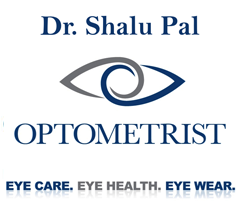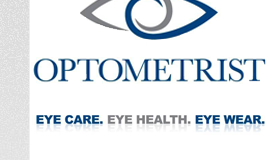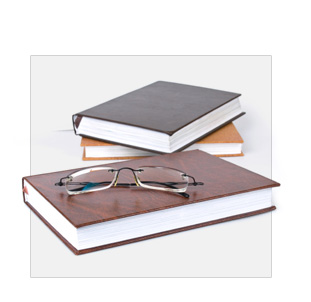Contact lenses are ideal for those who feel that eyeglasses are a hassle; they can slip down your nose fog up get dirty and be misplaced.
These problems do not exist with contact lenses and they are additionally beneficial as they can increase peripheral vision due to their close proximity to the eye.
Sports-minded people often prefer contact lenses as there is a decreased risk of injury during physical activity because unlike spectacles they will not fall off get in the way or get dirty. They also provide better peripheral vision as there is no frame to obstruct any portion of the visual field. However contacts might be more uncomfortable for some people than glasses as dust and bacteria on the contact lenses can cause irritation or infection. Some sports like squash or raquetball warrant protective eyewear and in these instances one would wear either contact lenses with safety eyewear or protective prescription eyewear.
Nearly everyone can wear contacts because of the wide variety of available lenses. Contact lenses are made of many different kinds of plastic but they fall under two categories: soft or rigid gas permeable. Soft contacts are easy to adapt to and are quite comfortable. Rigid gas permeable lenses take longer to adapt to but are more durable and more resistant to deposit build-up. They tend to be less expensive over the life of the lens but have a higher up front cost. There are also several types of specialty lenses usually available in both rigid and soft materials. Contact lenses are categorized by how often they are replaced and whether they remain in the eye overnight.
Rigid Gas Permeable (RGP) Contacts
These types of contacts provide the crispest vision available to patients who have high prescriptions or irregularly shaped corneas. Silicone is the principle material used in modern RGP lenses. This provides them with some flexibility on the eye and allows oxygen to pass through to the cornea. Since they are made of a rigid material they might be initially less comfortable than soft lenses and might take longer to adjust to. This period of adjustment can last between one to two weeks for people who have never worn contact lenses. Wearing RGP lenses daily achieves the maximum degree of comfort.
RGPs offer wearers benefits that are not available to those who wear soft lenses. The more durable material allows the contact to maintain its shape well when the eye moves or blinks which provides clearer vision. By cleaning and disinfecting the contact lenses after each use they can last a couple of years provided a prescription change is not necessary. They are easier to care for than soft lenses as they are easier to handle and proteins do not bind as quickly to them as they do to soft lenses. In addition the risk of eye infections with RGPs is marginally lower than that of soft contact lenses. RGPs can require a greater degree of practitioner skill to properly fit depending on the nature of the prescription the cornea and the type of lens design. These lenses are available in single vision and bifocal designs. They are often the best lens to use when correcting naturally irregular corneas or those which have been rendered irregular by surgery or trauma.
Soft Lenses
Soft contact lenses are popular because of their comfort affordability and convenience. These lenses are also made of different types of plastics however unlike RGPs, they act like a sponge and are made soft by absorbing and retaining water within the material. They have a water content ranging from 25 to 79 per cent. This affects the lens as the higher the water content the more chance oxygen has to reach the cornea. This is healthy for your eyes but can make handling the lens slightly more difficult. The increased oxygen can exacerbate dryness in patients who suffer from dry eye. The majority of people use a mid-water content material containing approximately 40 to 60 per cent water as this combines high oxygen transmissibility with ease of handling and lens comfort. Your Doctor will slect the material and lens design based on
- lens comfort
- maximizing visual acuity and
- providing optimal fit on the eye so as not to jeopardize the health of the cornea.
Soft contact lenses are available in two basic forms conventional daily wear lenses and disposable/frequent replacement lenses.
Conventional daily wear soft lenses are made of flexible plastic materials that allow oxygen to easily pass through to the eyes. Nightly cleaning disinfecting and yearly replacements are required. Although these lenses generally cost less than a year s supply of disposable lenses they are more costly to replace individually (in case of loss or tearing) and require more expensive and multi-step cleaning systems.
Disposable/frequent replacement soft lenses are similar to conventional lenses. The difference is that the wearer discards and replaces them according to a pre-determined wearing schedule. Disposable lenses typically refer to lenses that the wearer replaces after up to two weeks of use depending on the lens. Disposable lenses come in several modalities including; daily biweekly and weekly replacement schedules. Frequent replacement contact lenses are those that the wearer replaces monthly or quarterly. Daily disposables last for one day only thus eliminating the need for cleaning solutions. Although the non-daily disposables need cleaning after every use given that they only last for a few weeks they can usually be maintained using the less expensive and more convenient all-in-one solutions.
The majority of contact lens wearers wear some form of frequent replacement lens. The design type and modality best suited for any patient is best determined by your doctor and is based on many features the most important of which is the maintenance of good ocular health. Contact lenses are a safe form of vision correction; however they can create serious problems if they are abused not properly fit or not properly maintained. Frequent lens replacement is healthy for your eyes as they eliminate the problems associated with protein and bacteria build-up on contact lenses.





